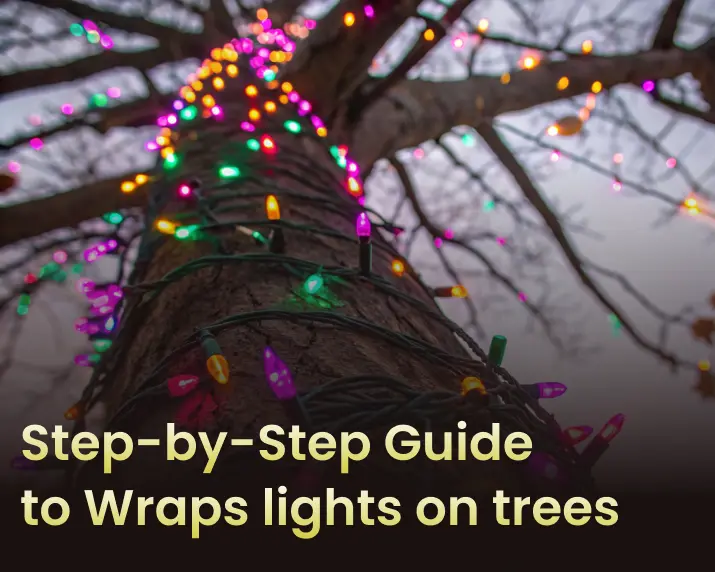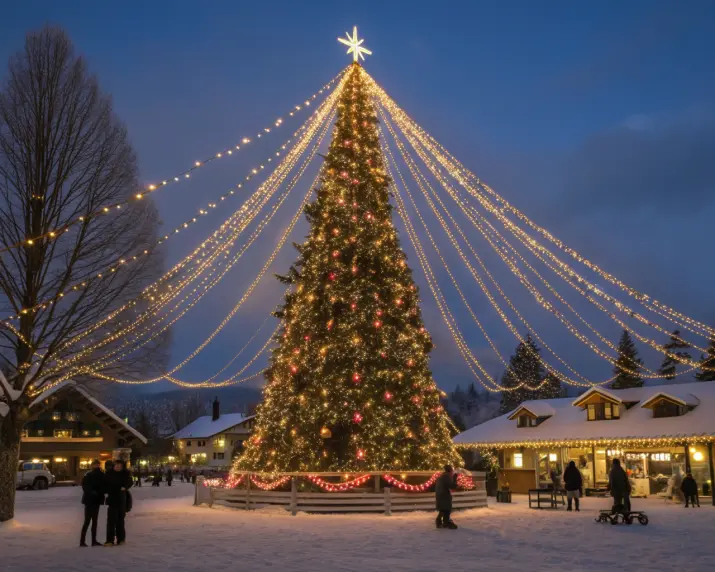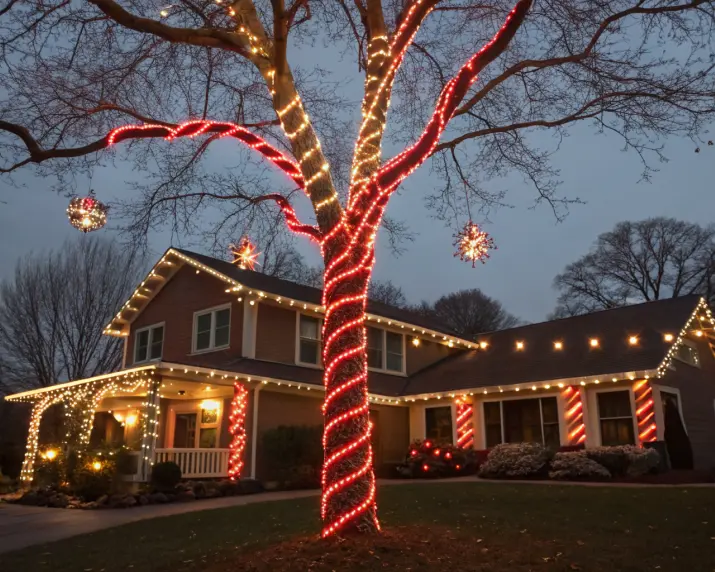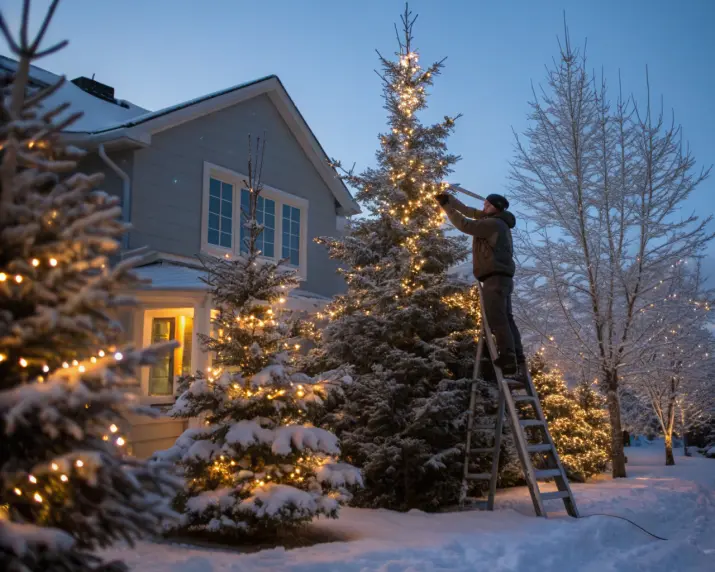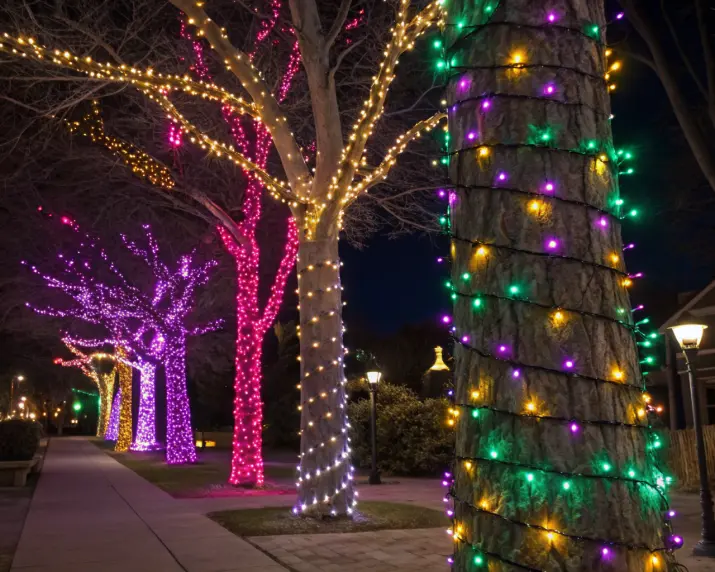Decorating the Christmas tree with lights is one of the most enjoyable parts of the Holiday season. The smell of pine needles, the sheen of the decorations, and the warmth of the lights all make the living room seem like a party immediately. However, many people hate that part of putting up lights the most. The threads become tangled, the distribution doesn’t seem right, and no matter how many bulbs you add, there is always a dark patch in the middle.
This is why it is so important to understand how to put lights on a Christmas tree the right way. The manner in which you hang the lights influences how brilliant they look, how well they balance, and even how easy it is to finish decorating when the decorations and garland come out. If you’ve ever wondered what the best method to place lights on a Christmas tree is, this article will tell you how to do it step by step.
Quick Prep
If you are unsure how to put lights on a Christmas tree the right way, start with a quick check. Test every strand to make sure each bulb works and that you have enough to cover the entire tree from top to bottom. Preparing your lights ahead of time saves effort later and prevents uneven lighting or dark spots. This step also helps if you plan to extend your setup to outdoor trees or other areas of your home.
Main Lighting Methods
The way you arrange your lights can completely change the look of your Christmas tree. Some methods are quick and easy, while others create a rich, layered glow that feels more refined. You can also mix techniques to find a balanced style that suits your space. Here are four reliable lighting methods that work well with different tree types, décor preferences, and time commitments.
1. Professional Glow: Branch Wrapping
Imagine how inviting your home can feel when every light is placed with care. Warm white bulbs paired with pinecones, burlap ribbon, and wooden ornaments create a timeless and cozy look. To capture the glow of a fireplace, include small accents of plaid fabric or subtle decorative lights. This style brings a natural, comfortable atmosphere that feels both classic and welcoming.
How to do it:
- Start at the bottom of the tree close to the trunk.
- Take a section of lights and wrap them along one branch, moving outward toward the tip.
- Loop back toward the trunk and move on to the next branch.
- Work your way around the tree, gradually moving upward.
Why it works: This technique creates depth because the lights are not just on the surface. They shine from deep inside the tree as well as the outside, giving a layered sparkle.
Best for: Full trees with lots of branches, especially artificial trees that can support more wrapping and weight.
Pro tip: Use green-wired lights so cords disappear into green branches. If you have a white or flocked tree, white-wired strands will blend better. For commercial purposes, you can hire a Commercial Christmas lights installation service provider.
2. The Classic and Easy Spiral Method
If you want a quick and simple way to put lights on a Christmas tree, the spiral method is one of the most reliable. It is easy to apply and gives the tree a clean, polished appearance that looks professional without much effort.
How to do it:
- Start at the top of the tree, close to the star or topper.
- Wrap the lights around the tree in gentle circles, moving downward as you go.
- Keep the spacing between each row about six to twelve inches apart, depending on how bright you want the tree to look.
- Once you reach the bottom, fill in any gaps and plug in the lights to check the coverage.
How it works:
This technique is straightforward and creates an even, balanced glow. It works well with both real and artificial trees and is ideal for those who prefer a traditional, classic look.
Best for:
Anyone who wants their tree to feel timeless and festive without spending too much time wrapping individual branches.
Pro tip:
Avoid pulling the strand too tightly. Keeping the lights slightly loose makes it easier to adjust later if you notice uneven sections.
3. The Zig-Zag or Wave Method (Saves Time)
This is a great approach for brick lighting decor. The zig-zag or wave method should be easy and quick to set up. You don’t wrap the lights around the tree; instead, you hang them in lines that go up and down or across the branches. This makes the look even and bright, which is perfect for big displays or trees outside.
Start at the top of the tree to do it.
Put the lights in a U-shape or wave, then bring the string back up and do it again.
Do it in parts to fill up the tree.
Why it works: This is one of the easiest and quickest ways to put up and take down lights. If you like to change the lights or decorations often, this is the best way to go.
Best for: Families that don’t have a lot of time or people who don’t want to spend time untangling strands at the end of the season.
When putting up lights on the Christmas tree becomes a holiday tradition, the joy of the season really comes through.
The Hybrid Method
A mix of approaches is sometimes the best way to go. A hybrid style combines parts of two or more styles to make a unique look.
- For equal coverage, start with a spiral base layer and then wrap a few outer branches to add depth.
- If your tree is in a corner, use the zig-zag approach and spirals just on the side that can be seen.
- For better access, wrap branches around the bottom half of the tree and put spiral lights on the top.
Why it works: Hybrid approaches can be used on trees of different sizes, in different places, and with different styles of ornamentation. They let you manage the brightness and balance better.
Best for: big trees, corner settings, or anyone who wants something unique.
Lighting Tips for a Balanced Look
No matter what kind of lighting you use, the secret to a beautifully illuminated Christmas tree is balance. Even the most neatly wrapped tree may appear flawless with just a few easy tricks.
- Work in sections: Instead of trying to do the whole tree at once, work on one part at a time.
- Take a step back often: Before you finish, look at the tree from several angles to see if there are any dark or uneven spots.
- The squint test: Step back a little and squint. Any black patches will be easy to see right away.
- Hide the wires: Push the cords deep into the branches so the lights glow without getting in the way.
- Mix bulb sizes: Adding smaller fairy lights to larger globe lights makes the space look deeper and more interesting.
- Change the brightness: If your lights let you, use dimmers or smart plugs to lessen the glare and establish the mood.
We talked about this before: LED lights are the best choice because they use less power and stay cool. If you plug in too many things or utilise bad cables, your Christmas decorations might rapidly become a fire hazard. If you pay attention, your tree will look great and stay secure all season.
Style and Finishing Touches
Once the lights are placed, the fun really begins. Your choice of lights and how you layer them creates the mood of the entire tree.
- Warm white for tradition: A soft golden glow feels cozy and timeless.
- Cool white for modern sparkle: Crisp white lights give a wintery, frosted effect.
- Colored strands for energy: Multicolor lights bring a playful, festive spirit perfect for family trees.
- Layered speciality strands: Add twinkling, fairy, or icicle lights on top of your main strand to create texture.
- Decorating order: Always hang ornaments after the lights. It keeps tangles to a minimum and ensures decorations are well-lit.
Pro tip: If you want the tree to look extra polished, add your heaviest or shiniest ornaments close to the lights. The bulbs will reflect and multiply the glow.
How Many Lights Do You Need? A Tree Size Chart
A common question is how many lights a Christmas tree needs. A practical guideline is 100 lights per foot of tree height. For example, a 6-foot tree would typically need around 600 lights. You can add more or fewer depending on whether you prefer a subtle glow or a brilliantly lit tree.
Guide for tree height and light:
- 4-foot tree: 400 to 600 lights
- 6-foot tree: 600 to 1,000 lights
- 7-foot tree: 800 to 1,200 lights
- 9-foot tree: 1,200 to 2,000 lights
- 12-foot tree: 2,500 lights or more
If you want a tree that looks dramatic and glows, use the upper end of the spectrum. To make your look softer, stick to the minimal.
Natural vs Artificial Trees: Lighting Considerations
When specifying lighting for Christmas installations, the type of tree, natural or artificial, affects method, labour, and risk management.
Natural Trees
Lighting natural trees presents operational challenges that require careful planning:
- Branches are irregular, making spiral or zig-zag installation methods more practical than tight wrapping.
- Lights must be positioned carefully to avoid contact with sap or sharp needles, which can damage cables or reduce lifespan.
- Moisture management is critical. Daily checks of water levels reduce fire risks from dry branches near heat-producing bulbs.
Artificial Trees
Artificial trees provide uniformity and flexibility in installation:
- Consistent branch spacing allows full wrapping, producing a neat and professional appearance.
- Additional strands can be added to increase brightness without stressing the branches.
- Clear or white-wired lights complement white or flocked trees to create a smooth, visually consistent finish.
How to Resolve Common Lighting Failures
Even well-planned installations encounter operational issues. Here are fast, actionable solutions:
- Strand Out / Fuse Failure: If half a strand is off, inspect the inline fuse and replace individual bulbs as needed.
- Uneven Distribution: Unplug, step back, and reposition strands before finalizing decorations.
- Insufficient Brightness: Add auxiliary fairy lights or battery-operated micro-strands in darker areas to enhance illumination.
- Intermittent Flicker: Replace weak or broken bulbs immediately. LED strands typically provide a long-term solution.
Styling Themes Using Light as the Primary Design Driver
Lighting does more than illuminate. It defines the visual identity and thematic intent of a tree installation. Choosing the right colour, strand type, and placement can deliver a professional, branded look without overloading the design.
- Classic Warm White: Creates an inviting, traditional ambience for both residential and commercial spaces.
- Cool White / Ice Effect: Ideal for modern or corporate settings, enhancing architectural features of the environment.
- Multicolour or Programmable RGB: Suitable for experiential displays in retail or hospitality, offering dynamic visual engagement.
- Layered Illumination: Combine ambient, accent, and focal lights to guide attention and highlight key design elements.
Fun Styling Themes with Lights
Lights set the mood and theme for your Christmas tree. By choosing the right colour, style, and placement of lights, you can make your tree seem like you and establish the tone for the season. These are some common styles that might help you:
Rustic Lodge
Just think about how adorable your house can look with lights. With pinecones, burlap ribbon, and wooden ornaments, warm white lights look beautiful. To make the room feel like it’s near a fireplace, add some plaid fabric or small lights. This theme is great if you want a more natural and homey feel.
A Winter Magic Kingdom
Ice blue or frigid white lights can create a cold and stark appearance if used alone. To get a polished, snow-like effect, pair these lights with reflective materials such as silver, glass, and glitter. Incorporating elements like snowflake ornaments, iced branches, and white ribbon enhances the visual impact and creates a cohesive frozen landscape aesthetic. For optimal results, install the lights in layers deep within the branches before adding these decorative accents. This approach ensures even illumination, maximizes visual depth, and maintains a professional, high-end presentation.
The Classic Family
It’s so lovely to see the lights twinkle on the Christmas tree. Add them to ornaments you’ve collected over the years, handmade decorations, or special creations your children have made. This theme is perfect for family gatherings, as it celebrates traditions and cherished memories, making the Christmas season feel wonderfully warm and cosy.
Glam and Luxury
If you want a little drama and class, you may overlay warm and cold white lights to provide depth and radiance. The tree looks quite fancy with gold, silver, and bronze metal decorations and crystal accents. Mirrored baubles or velvet ribbon offer more depth, making the tree a real showpiece. You can get in touch with a light installation company for a hassle-free experience.
Minimalist
Sometimes, a little is more than enough. A sparse imitation tree with simple fairy lights and ornaments gives the area a modern, clean look. If you want a tree that appears serene and simple, use a color scheme with whites, blacks, or muted tones. Good for small spaces or those who want a clean, Scandinavian design.
Conclusion
Choosing the right way to place lights on a Christmas tree is all about your style and how patient you are. Wrapping limbs gives a professional look. The spiral approach is simple and well-known. Patterns that go back and forth save time. Hybrid styles let you be flexible. No matter which way you choose, if you are thinking about how do you put lights on a Christmas tree, a few easy checks for balance and safety will make your tree seem like the brightest part of the season. You can enjoy the lovely glow all season long with Elevated Seasons.
FAQs
Should you turn on the lights at the top or the bottom?
Both ways may work, but beginning from the top helps you keep the plug close to the base and the topper area tidy. It also makes it easy to spiral or zig-zag down all the time.
Are LED lights superior to regular light bulbs?
Yes. LED strands are safer, use less energy, and last a lot longer. Compared to traditional incandescent lights, they remain cool to the touch, consume less electricity, and are less likely to catch fire. Overall, they are the better option.
Is it possible to blend hues of light?
Combining cold and warm whites definitely gives depth, and combining colorful and white strands strikes a balance between fun and elegance. The key is to make the distribution even so that the mix seems planned instead of random.
How do you keep the lights from becoming tangled?
Wrapping your lights around cardboard, a reel, or a storage spool is the best way to keep them from getting tangled before you put them away. It takes a bit more work, but it’s a good method to keep your lights neat and ready for next year.


